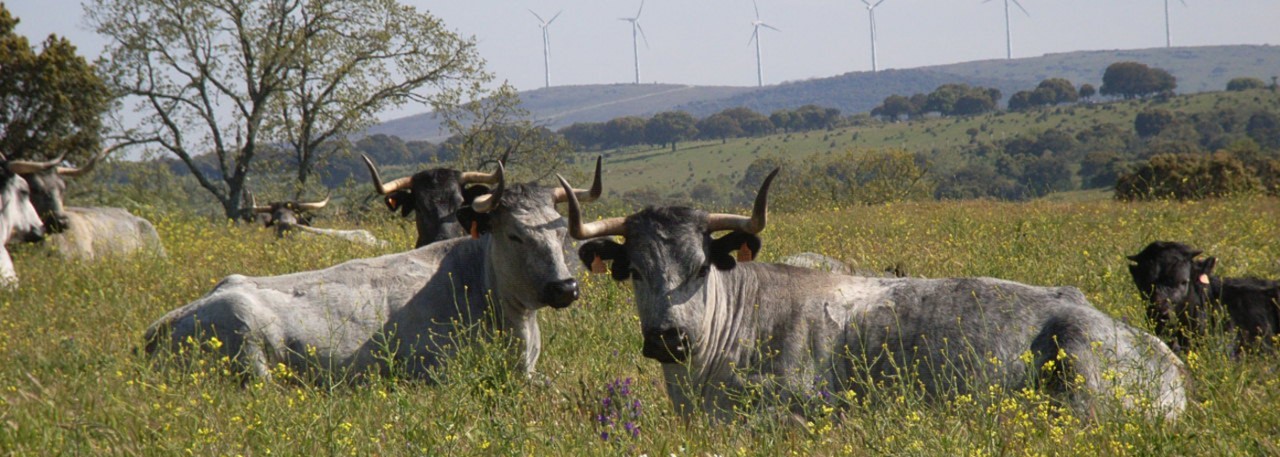.png.transform/rendition-xs/image_image%20(1).png)
Carne de Morucha de Salamanca PGI
Meat from the Morucha bovine cattle breed, following extensive farming techniques and using natural resources.
Tasting notes
Morucha cattle are pure bred, involving no other ethnic group. The cattle are dark, varying in size, with a short neck and short dewlap, with a harmonious build and lively movements. The thorax is deep, the chest broad and the back broad and muscular.
Other notes
The specific characteristics of the different types of beef are as follows:
- Ternera: firm consistency, slightly moist, fine texture. The color varies between bright red and light red.
- Añojo: bright purplish-red meat, with white fat, firm to the touch, slightly moist, fine texture.
- Novillo: cherry pink meat, with cream fat, firm to the touch, slightly moist, fine texture and medium level of intramuscular fat.
Production / Processing method
The young animals pasture freely on the dehesa rangelands, which offer a species-rich community, including holm oaks with perennial, coriaceous leaves and an understory of bushes and lianas.
The Morucha cattle make maximum use of the natural resources available on the dehesa, feeding on grass, stubble, etc.
Meat production involves slaughter, working and cutting prior to dispatch. Slaughter and working may not be carried out simultaneously with that of non-PGI cattle. The carcass must at all times be clearly traceable to the animal it came from, and the whole process is controlled by the Regulatory Council.
After slaughter, the carcasses are matured and preserved. Storage of carcasses must be carried out in such a way as to avoid confusion with non-PGI carcasses.
Geography / Relief and climate
The landscape in the production area is very varied, with marked contrasts because of its size and the diversity of the districts in the province of Salamanca.
The soils in most of the holm oak dehesas , scrublands ,were formed from siliceous materials, mostly granite rocks and large areas of slate and sandstone. The soils are shallow and stony, leading to better crops at times of limited rainfall because rain tends to form puddles on the surface, spoiling crops.
The climate is continental, with long, cold winters, a long period of frost, and hot, dry summers with sharp temperature changes. Most rain falls in autumn and winter, and the eastern part of the production area is very dry. These rainfall and temperature conditions are excellent for the production of beef from Morucha cattle.
Regulatory Council
Consejo Regulador de la IGP Carne de Morucha de Salamanca
C/ Santa Clara, 20
37001 Salamanca
Tel: (+34) 923 21 47 46
crigp@carnedemoruchadesalamanca.org
www.carnedemoruchadesalamanca.org
Sources:
Morucha cattle are dark, varying in size, with a short neck and short dewlap, with a harmonious build and lively movements.


- /content/dam/en/icex-foodswines/images/products/fresh-meat/carne-de-morucha-de-salamanca-pgi/Carne%20de%20Morucha%20de%20Salamanca%20PGI%20foot.jpg
- /content/dam/en/icex-foodswines/images/products/fresh-meat/carne-de-morucha-de-salamanca-pgi/Carne%20de%20Morucha%20de%20Salamanca%20PGI%20carr2.jpg

Salamanca (Castile-Leon)
